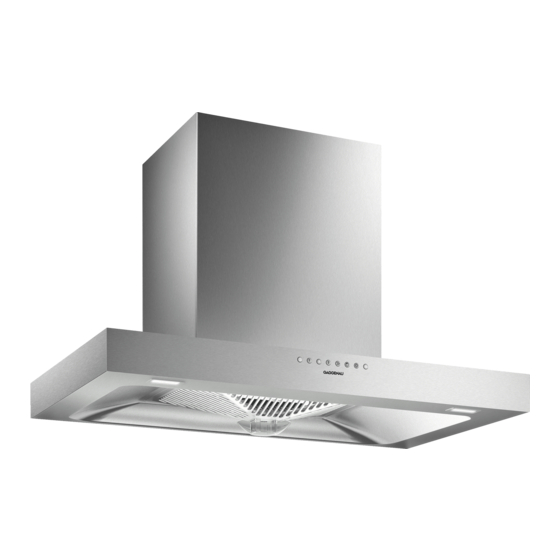Gaggenau AW 221 191 CN Instrukcja obsługi - Strona 5
Przeglądaj online lub pobierz pdf Instrukcja obsługi dla Okap wentylacyjny Gaggenau AW 221 191 CN. Gaggenau AW 221 191 CN 12 stron. Extractor hood

Causes of damage
Caution!
Risk of damage due to corrosion. Always switch on the
appliance while cooking to avoid condensation.
Condensate can produce corrosion damage.
Risk of damage due to ingress of humidity into the
electronic circuitry. Never clean operator controls with a
wet cloth.
Surface damage due to incorrect cleaning. Clean
stainless steel surfaces in the direction of the grain
only. Do not use any stainless steel cleaners for
operator controls.
Surface damage due to strong or abrasive cleaning
agents. Never use strong and abrasive cleaning agents.
Risk of damage from returning condensate. Install the
exhaust duct in such a way that it falls away from the
appliance slightly (1° slope).
Environmental protection
Your new appliance is particularly energy-efficient. Here
you can find tips on how to save even more energy when
using the appliance, and how to dispose of your
appliance properly.
Saving energy
▯
During cooking, ensure that there is a sufficient
supply of air so that the extractor hood can work
efficiently and with a low level of operating noise.
▯
Adjust the fan speed to the intensity of the cooking
fumes. Only use intensive mode where this is
required. A lower fan speed means that less energy
is consumed.
▯
If there are intensive cooking fumes, select a higher
fan speed in good time. If cooking fumes have
already spread in the kitchen, the extractor hood
must be operated for longer.
▯
Switch off the extractor hood if you no longer
require it.
▯
Switch off the lighting if you no longer require it.
▯
Clean and, if required, replace the filter at regular
intervals in order to increase the effectiveness of
the ventilation system and to prevent the risk of fire.
Environmentally-friendly disposal
Dispose of packaging in an environmentally-friendly
manner.
This appliance is labelled in accordance with
European Directive 2012/19/EU concerning
used electrical and electronic appliances
(waste electrical and electronic equipment -
WEEE). The guideline determines the
framework for the return and recycling of used
appliances as applicable throughout the EU.
5
